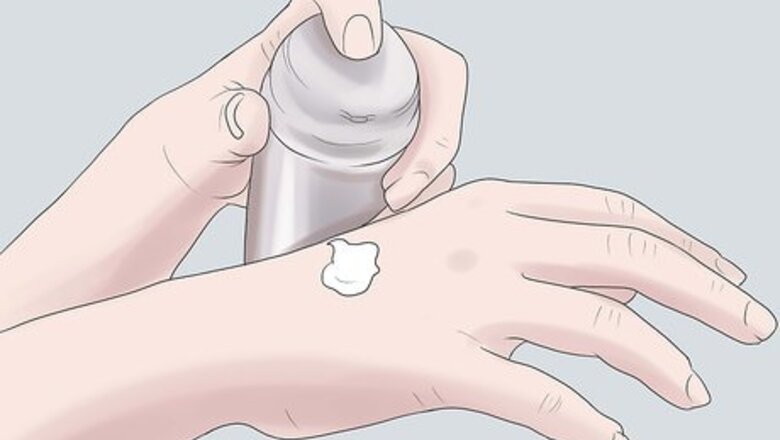
views
Trying Quick Fixes

Apply antiperspirant to your hands. There are many antiperspirants designed especially for hands and feet. Nonprescription antiperspirants will temporarily block sweat pores, which means less sweat will be produced on your skin. Make sure to choose an antiperspirant and not just a deodorant; these are different kinds of products for different uses. It may help to include an antiperspirant in your daily body care routine, preventing occasional sweat rather than treating already-sweaty palms. Consult a dermatologist or a general care provider for guidance about different antiperspirant products.

Choose clothing that complements your activities. Loose-fitting clothing can help your body regulate its temperature, reducing the amount of sweat that appears on uncovered body parts. Cotton, wool, and silk generally allow your skin to breathe and are good choices for hot weather. Sport clothing that wicks away sweat may be a good choice for exercising.
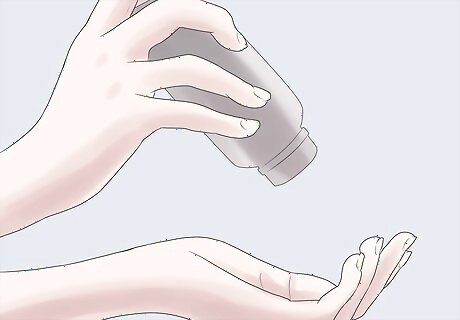
Rub talcum powder or cornstarch between your palms. These powders absorb moisture easily, keeping your hands from appearing too damp. They can also help increase your grip, which may be diminished due to sweat. Avoid caking your hands in powder, which may make you sweat more. A light dusting is fine. Be sure to wash powder off afterwards.
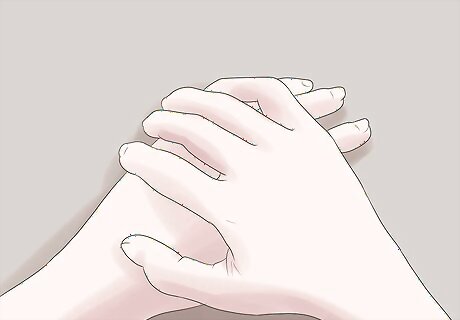
Take frequent breaks when using your hands. Tasks such as typing, construction, or writing involve a lot of friction, heat, and work. Make sure you take regular breaks when performing these activities so your body can regulate its temperature. Wiping your hands off with a soft cloth or towel may also help. Breaks can be combined with other sweat-reduction tips found in this article; for instance, during a break you could wash your hands or move to a cooler place. If possible, try to alternate your tasks throughout the day. Type for half an hour and then do a different task before coming back to typing. This will allow your body to rest.
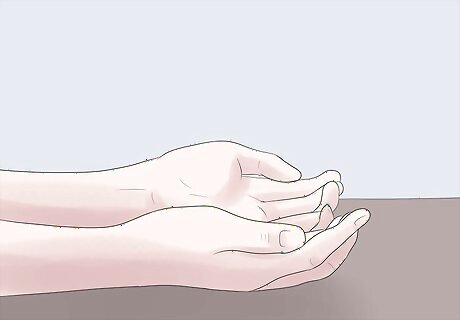
Allow air to circulate on your palms and fingers. Don't hide your hands in your pockets or cover them with gloves or rings. Keeping your hands in cramped areas will make them damp, warm, and sweaty. Though cool air may feel uncomfortable or cold on very sweaty patches of skin, it will help reduce sweating.
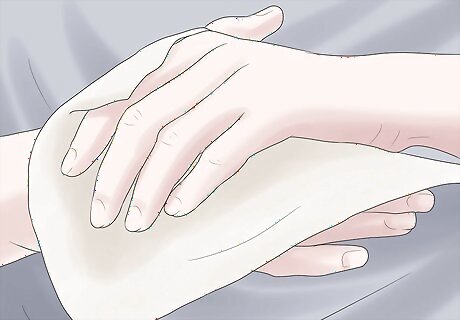
Keep a napkin or handkerchief with you to dry off your hands whenever necessary. A simple cotton cloth can keep your hands dry for a period of time. You needn't wipe your hands off regularly, only when they become unreasonably sweaty. Cotton is preferable, as it absorbs moisture well. Consider keeping a plastic baggy with you in which you can keep used cloths. Dipping your handkerchief or cloth in rubbing alcohol can help your hands stay clean and cool.
Being Conscious of Your Diet

Drink lots of water to cool down your body. A warm body will sweat in order to cool itself. Staying hydrated is important because it allows your body to regulate its temperature. More than that, though, cold drinks, rather than room-temperature or warm drinks, can prevent excess sweating, as the intake of cold fluids keeps your core body temperature down. Water is best, but you can drink chilled teas or other non-calorie drinks that taste good--the better they taste, the more likely you are to drink them. You can drink sports drinks as well, but such fluids are designed for use by athletes engaging in vigorous activity. These drinks contain carbohydrates and electrolytes you may not need if you aren't exercising.
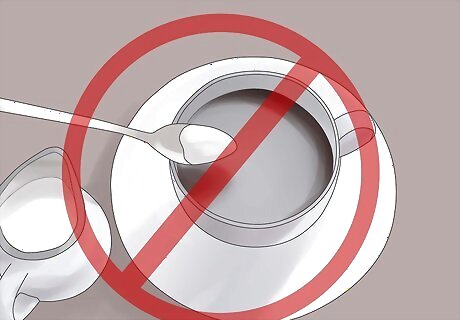
Avoid foods with added sugars. Sugar-laden foods can boost blood sugar, which can lead to dizziness, sleepiness, and sweating. If you are sensitive to sugar, eating more than you need may lead to increased sweating. Additionally, conditions such as reactive hypoglycemia may lead to sweating, jitteriness, and headaches after ingesting sugar. Other foods composed of simple sugars, such as white bread or potatoes, may aggravate such reactions even if they don't contain added sugar. Cut these out of your diet, or replace them with alternatives, such as wheat bread or yams, that contain more complex carbohydrates.

Stay away from spicy foods and caffeinated liquids. These should be especially avoided on warm days. Spice and caffeine activate specific neurotransmitters that tell your body to produce sweat. Choose milder foods and reduced-caffeine drinks and treats. Remember that even decaf coffee contains trace amounts of caffeine, which may be a problem for sensitive individuals.

Eat plenty of fruits, vegetables, and whole grains. These are a good source of fiber, vitamins, and minerals that help regulate bodily functions. Whole foods promote stable blood sugar levels, which can prevent sweatiness of the palms. Fresh fruit and vegetables contain water, which can help regular body temperature, especially if chilled. You may consider including a multivitamin in your diet if you cannot eat many different kinds of plant foods. Contrary to popular conception, fruit and vegetables diets do not "detox" your body. It is better to include such foods as part of a daily diet rather than as a crash diet.

Limit your intake of foods that are high in iodine. These foods include turkey, onions, cranberries, dairy products, potatoes, broccoli, beef, and asparagus. Though these foods are healthful, consuming too much iodine may contribute to hyperthyroidism, a metabolic dysfunction. One symptom of hyperthyroidism is excessive sweating. Only a doctor can diagnose hyperthyroidism. If you are concerned about developing metabolic syndromes, consult your primary care provider.
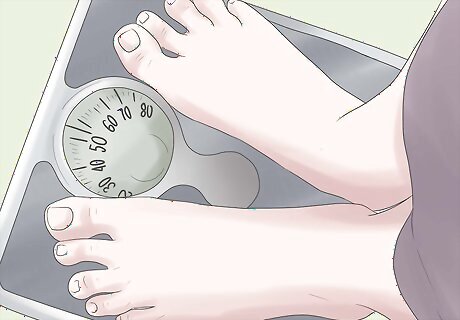
Keep your weight at a healthy level. Excessive sweating can be more common in those who are overweight, obese, or otherwise unfit. Though exercise, especially strenuous exercise, causes one to sweat, you will sweat less in your everyday life if you are at a healthy weight and commit to a healthy activity level.
Making Lifestyle Changes
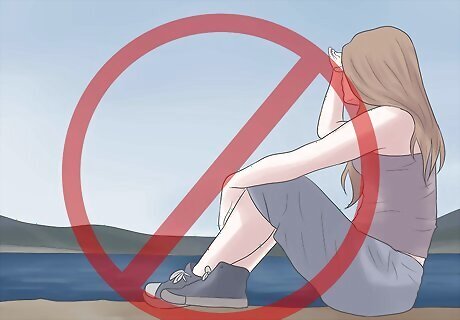
Avoid hot and humid places. Your body will sweat in order to reduce its temperature. Being in hot weather will raise your body temperature. If you are outside a lot during hot parts of the year, consider taking regular breaks indoors where it is cooler, or seeking regular refuge in the shade or under an umbrella. Public areas, such as coffee shops, libraries, and museums, often have air conditioning during hotter months. It is generally acceptable to spend time in these areas in order to relax and beat the heat.
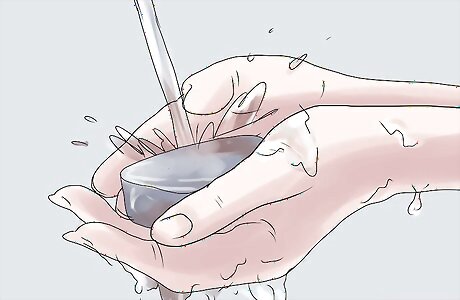
Wash your hands often with soap and water. Though this may seem counter-intuitive, rinsing your hands with cool water can lower your body temperature, preventing excess sweat. Using soap will keep your hands healthy and bacteria-free. Make sure you dry your hands completely with a soft cloth after washing them. Excess hand washing may make them too dry. Either limit hand washing or consider using a lotion after washing. An alcohol-based hand sanitizer can also keep your hands cool.

Take cool showers to keep your body from sweating. Cool showers are a great way to reduce your body heat in hot weather or long days. Take care that you don't shower too much; too much cleansing can leave your skin dry and without essential oils, which may interfere with healthy sweating. Consider using a moisturizer or body lotion, as well as an antiperspirant, after showering.
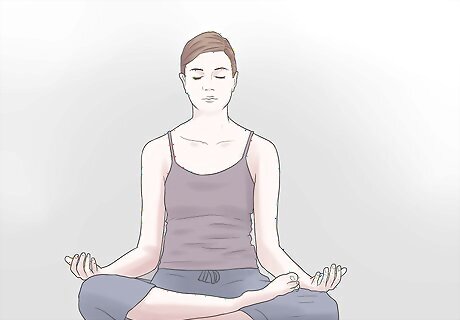
Control your anxiety and stress. Stressful situations can make you sweat more than usual. Control your stress levels through daily exercises such as yoga, meditation, or massage. Consider practicing different relaxation techniques, such as deep breathing, progressive muscle relaxation, and even laughter. Mix and match these techniques for your daily life in order to combat different kinds of stress--do yoga in the morning, for instance, and breathe deeply throughout the day. Warm baths can help you control your stress (and sweat) levels, even if they do raise your body temperature.
Seeking Medical Treatment for Severe Problems

Consult with your doctor to find out if you have hyperhidrosis. This disorder is characterized by excessive sweating. It may be time to meet with a doctor if you have a sudden increase in sweatiness, if sweatiness disrupts your daily life, or if you experience night sweats without any apparent reason. Your doctor may ask general questions about lifestyle, or may request a history of your symptoms. Your care provider may first advise non-prescription antiperspirants, or may prescribe a stronger topical medicine such as Drysol. Only a doctor can diagnose you with a treatable disorder such as hyperhidrosis.
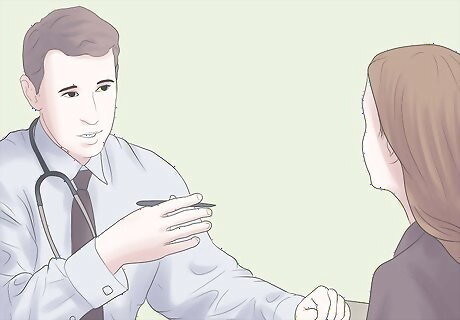
Consider asking your doctor about iontophoresis. Iontophoresis is a process that involves applying low-level electrical currents to affected areas, such as palms. It has been shown in many cases to reduce sweating. This treatment is not permanent; it is administered twice a day for several days, after which you will have reduced sweatiness for several weeks. Then the procedure must be repeated again. Your doctor may suggest a device that you can use to treat yourself at home. Iontophoresis may not be right for you if you are pregnant or use a pacemaker.
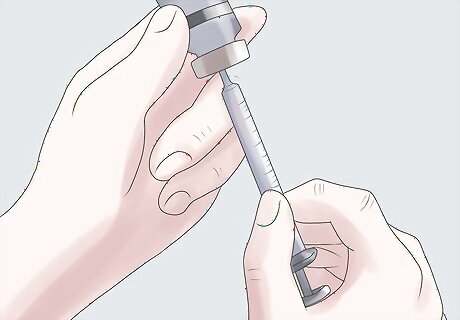
Consider Botox injections. Botox, usually known as a treatment for facial wrinkles, can reduce sweating by paralyzing the nerves in your palms. This treatment can also work on other body parts, such as the soles of feet. This procedure may be more expensive than other options and is temporary, keeping sweat away for six to twelve months.

Talk to your doctor about surgery. Some surgical procedures can alter nerves that stimulate excess sweat production. Others can remove problematic glands in your palm. Surgical corrections become permanent about one month after the procedure, so there is room to reverse the changes. This doesn't mean surgery should be considered lightly; surgery can be expensive and may put you at risk for negative side effects.


















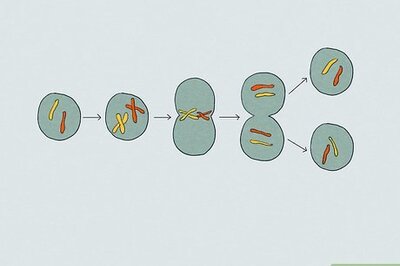

Comments
0 comment